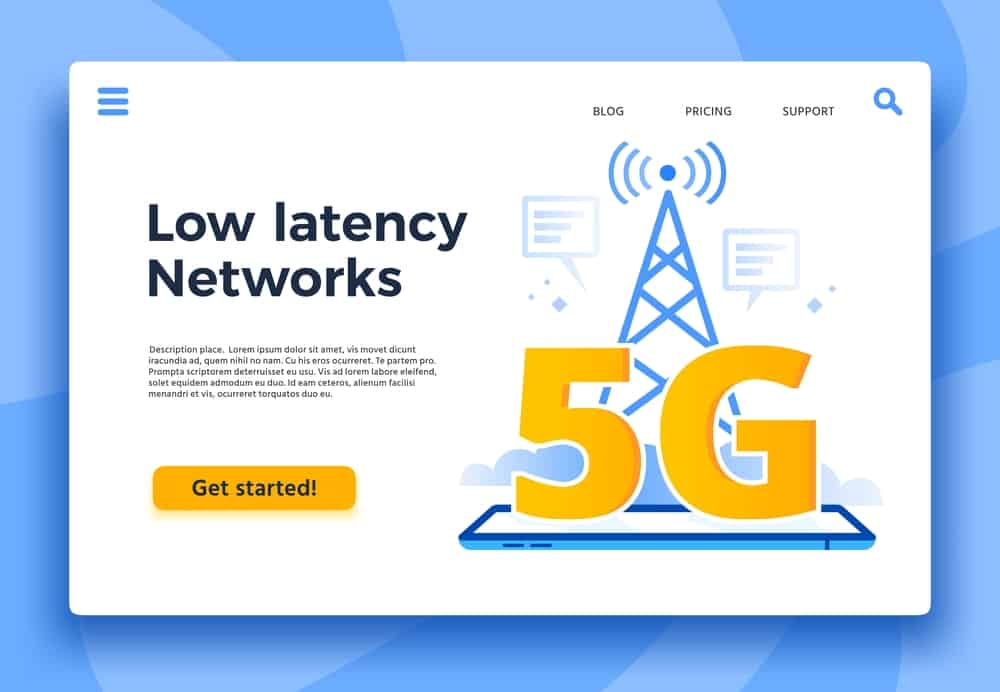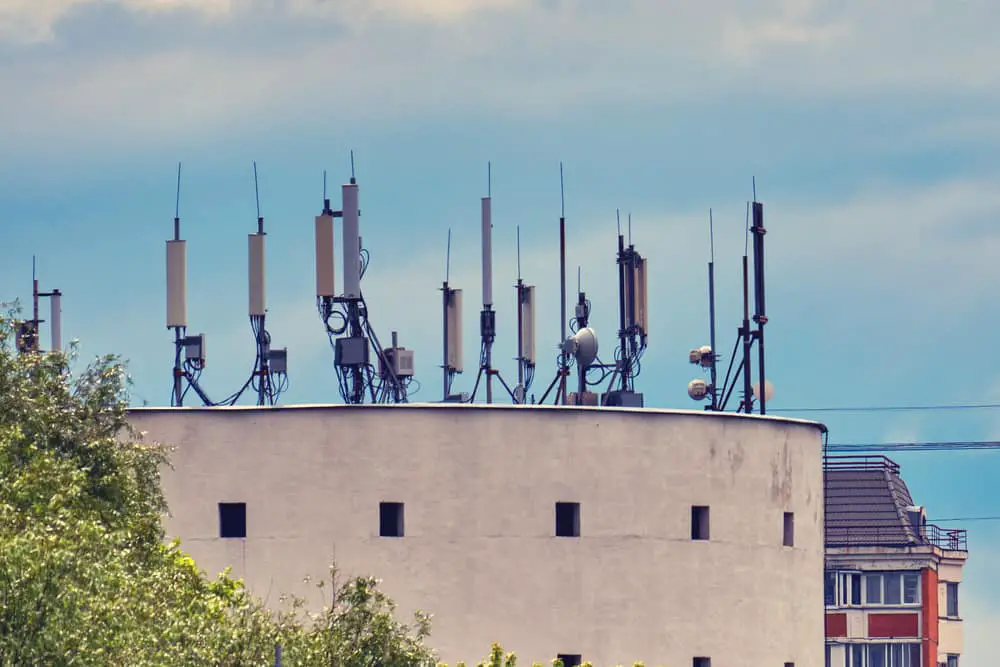The internet has always been a bastion of false information. However, the novel coronavirus, which peaked in 2020, seems to have set the conspiracy theory mill into overdrive. One of the theories that have been spreading around the globe as fast as the virus itself is the unsubstantiated claim that 5G is linked to COVID-19.
The false claims connecting the spread of COVID-19 to 5G technology did not just spark apprehension among an already restless public; they also resulted in damage to property when wayward individuals set telecommunication towers on fire. Even though the theories claiming that 5G networks accelerate the spread of the coronavirus have been debunked by the World Health Organization, many people still repeat the claims made by anti-5G activists.
Not all claims made about 5G are ridiculous and dangerous; some are honest misconceptions. For instance, some people believe that 5G has been the missing element in the widespread introduction of self-driving cars. Therefore, the arrival of 5G means that we have arrived at the age where all cars will finally drive themselves. Others believe that the Internet of Things and 5G technology mean the same thing.
Conspiracy theories and misconceptions spread in environments where people do not have sufficient credible information. This article aims to close that information gap. We use statistics to share accurate knowledge about 5G technologies. We believe that this technology presents a massive opportunity to take the world forward as data traffic is growing exponentially and communication between machines becomes the norm.
This article covers several topics, including a brief description of 5G technology and how it works, how this technology differs from its predecessors, and forecasts on the growth of 5G technology into the future.
Table of Contents
- What Is 5G?
- Reduced Latency
- What Makes 5G Different From Previous Technologies?
- What Benefits Does 5G Introduce?
- The Future of 5G
- 5G in the Developing World
- Growing Value
- Increasing Inequality
What Is 5G?
To get an understanding of 5G, let’s start by looking at the G in 5G. The G in 5G stands for “generation.” Since the 70s, network technologies have been continually developing, resulting in improved network standards from one generation to the next. The network technologies started with the deployment of 1G in the 1970s, going to 4G in 2010.
The difference between each generation lies in the speed of data transmission and the capabilities it made possible. For instance, 1G technology only offered voice and an analog service with data transmission speeds of 2.4 kbps. These speeds would rise to 400 Mbps, enabling devices to do a lot more using 4G.
5G technology is, therefore, the latest generation of wireless mobile technology. Its rollout started in 2019. Compared to its predecessors, 5G technology presents massive opportunities. For instance, this technology is reported to achieve speeds of up to 20 Gbps, which is about 20 times the speeds achieved by 4G.
Reduced Latency

One of the major improvements introduced by 5G technology is the faster transmission of data between devices, resulting in reduced latency. Latency is the speed with which data from one device is uploaded and reaches its target destination. Low latency is extremely important for applications that have to make decisions in a fraction of a second, like self-driving cars, high-frequency trading, tele-surgery, and cloud computing.
The French multinational serving the security, defense, transportation, and aerospace industries, Thales, reports that “5G technology offers an extremely low latency rate, the delay between the sending and receiving of information. From 200 milliseconds for 4G, we go down to 1 millisecond (1 ms) with 5G.”
To better understand the numbers, Thales notes that a human being reacts to visual stimulus in one-quarter of a second (250 ms). If a car using 5G technology could react within 1 ms, one could argue that such a car reacts 250 times faster than a human being. This could have a positive effect on making road users safer.
If you are using a 5G network, you can expect latency to range between 1 and 4 milliseconds.
What Makes 5G Different From Previous Technologies?
Apart from the fact that 5G has attracted the wrath of conservative movements and conspiracy theorists, several other elements make the technology different from previous technologies.
More Base Stations and Connected Devices

One of the significant differences between 5G technologies and their predecessors is that 5G increases performance through higher frequencies. To deliver these higher frequencies, the technology requires more base stations.
Could the need for more base stations mean higher levels of exposure to radiofrequency fields for humans? For now, the WHO reports that “exposure from 5G infrastructures at around 3.5 GHz is similar to that from existing mobile phone base stations.” Adding, “With the use of multiple beams from 5G antennas, exposure could be more variable as a function of the location of the users and their usage.” However, the WHO says that it’s still too early to provide conclusive opinions on radiofrequency exposure.
The US Food and Drug Administration (FDA) defines Radio frequency (RF) radiation as “a combination of electric and magnetic fields that move through space together as waves.” The antenna’s electronic charges generate these waves. Exposure to very high levels of RF radiation has been shown to have adverse health effects, particularly affecting the eyes and testes.
Verizon reports that 5G can connect more than 1 million devices per square kilometer. The same source reports that “The number of connected devices will be more than three times the global population by 2022.”
One Hundred Times Faster
Another significant difference between 5G technology and earlier generations is the speed with which it transforms data. Alan Seal writes for the vXchnge, a company that helps businesses manage their data infrastructure. He says that 5G is 100 times faster compared to 4G technology.
To put things in perspective, Seal says that the average speed of a 4G network could be about 1.87 MB/s, and this can download a 3 GB movie in about 27 minutes. Enter 5G, and things change drastically. With average speeds of around 87.5 MB/s, you could download the same movie in 35 seconds.
However, it is necessary to note that the speeds claimed by networks for the different generations of technology are often not what you get in real life. So, even if a service advertises that you can now download a 3G movie in 35 seconds by using 5G, the reality can be different.
Tim Fisher uses an article published by Lifewire.com to explain why the advertised speed and actual speeds are often different. He says that the measurements given are usually “a reflection of 5G speeds in ideal conditions with basically no latency or interference, and only if your device is the only one using that 5G cell.”
According to Fisher, several elements determine the speed you get from your 5G network. Examples of such factors include your location, hardware, speeds your network is capable of, interference between the user and the cell delivering 5G, and the number of users sharing the network.
Number of Devices Connected
Even though many people will get excited about speed, Intel.com introduces an interesting question: “How will 5G help businesses scale their technology initiatives?” The same source has the answer: “5G will deliver up to 1,000x more capacity than 4G, creating fertile ground for IoT development.”
Intel.com predicts that 5G can drastically improve processes by allowing machines to communicate and deliver services faster and using predictive maintenance to lower the risk of work stoppages. These capabilities will result in the proliferation of smart cities and homes.
What Benefits Does 5G Introduce?

For the average person, 5G technology brings many benefits. Apart from reducing latency, the technology makes it possible for a network to carry a vast number of devices. This means that people will no longer struggle to get services in crowded areas. Added to this, by providing more connected devices, 5G technology makes life easier. You will also no longer be waiting 27 minutes to download a 3G movie because, with 5G, you can now do that in almost half a minute.
Nicol Turner-Lee, Senior Fellow in Governance Studies and Director at the Brookings Institution’s Center for Technology Innovation, writes comprehensively about how 5G will benefit communities of color. She says, “By providing both ubiquity and some level of digital equity for marginalized groups, robust 5G networks will ensure these populations are not left behind.”
Lee also notes that with the opportunities delivered by 5G supporting many devices, more people will access services previously insufficiently available in communities. Added to this, 5G encourages the type of IoT educational solutions that can uplift disadvantaged communities.
The Future of 5G
5G was introduced in 2019 with great expectations, but what does the future of the technology look like? If we look at the numbers, the 5G technology future looks very bright, at least for some.
Growing Numbers of Subscribers
When the Swedish multinational networking and telecommunications firm Ericsson published its mobility report in November 2020, it presented some numbers that provide a glimpse into the future of 5G technology and how it would impact communities.
Ericsson reports that by the third quarter of 2020, “1.7 million [5G] connections are served across the US by FirstNet – built and managed by AT&T”. The same company predicted that by the end of 2020, 5G would be available to about 15 percent of the world’s population, translating to about 1 billion people. According to the firm, it will take only six years before 5G subscriptions reach 3.5 billion. This represents nearly half of the world’s population.
Statista predicts that the number of global 5G subscribers is expected to reach 2.7 billion by 2025. But where will all these subscribers be located? According to Statista, the most 5G subscriptions are expected to be in Northeast Asia, North America, and Western Europe. However, the market and consumer data provider says that almost half (45 percent) of these expected subscriptions will be in Northeast Asia.
5G in the Developing World

If the prospects for 5G uptake look promising in Northeast Asia, North America, and Western Europe, what does the situation look like in the developing world? The Ericsson report has some numbers.
For purposes of comparison, let’s start by saying that 5G mobile subscriptions are expected to account for 80% of all subscriptions in North America, 35 percent in Central and Eastern Europe, 68 percent in Western Europe, 30 percent in Southeast Asia, and Oceania, and 66% in Northeast Asia by 2026.
Sub-Saharan Africa: 5G subscriptions are expected to account for about 5% of all mobile subscriptions in Sub-Saharan Africa by 2026. The growth in mobile broadband subscriptions in the region is expected to be driven by the growth in the population, young people with digital skills, and the decreasing cost of smartphones.
The Middle East and North Africa: In this region, the penetration of 5G technologies is expected to start accelerating in 2021. It is anticipated that by 2026, around 130 million people will have a 5G subscription. This represents about 15 percent of all people with a mobile subscription.
India: It is estimated that around 350 million people will have 5G mobile subscriptions in India by 2026, representing about 27 percent of all mobile subscribers.
Latin America: In Latin America, it is projected that around 26% of all mobile subscriptions will be 5G subscriptions by 2026.
Growing Value
The value of the 5G market is expected to grow with the growing number of subscribers. Here are some numbers forecasting the future of the industry:
- In 2020, the global 5G market size was estimated at $41.48 billion.
- By 2028, the global 5G market is expected to reach $664.75 billion.
- The 5G chip market is expected to be worth $22.86 billion worldwide by 2027.
- The five-year cost of deploying the fiber infrastructure required to carry 5G technology in the United States sufficiently is estimated to be between $130 billion and $150 billion.
Increasing Inequality
The numbers above lend credence to the apprehensions that some often have when new technologies like 5G are rolled out. These concerns are related to the fact that the gap between the developing and developed world deepens whenever new technologies are introduced. This gap has ramifications for the quality of life, ability to access services, and livelihoods.
Notwithstanding the concerns, it’s clear from the numbers above that 5G is the future that brings with it opportunities and possibilities never seen before.
